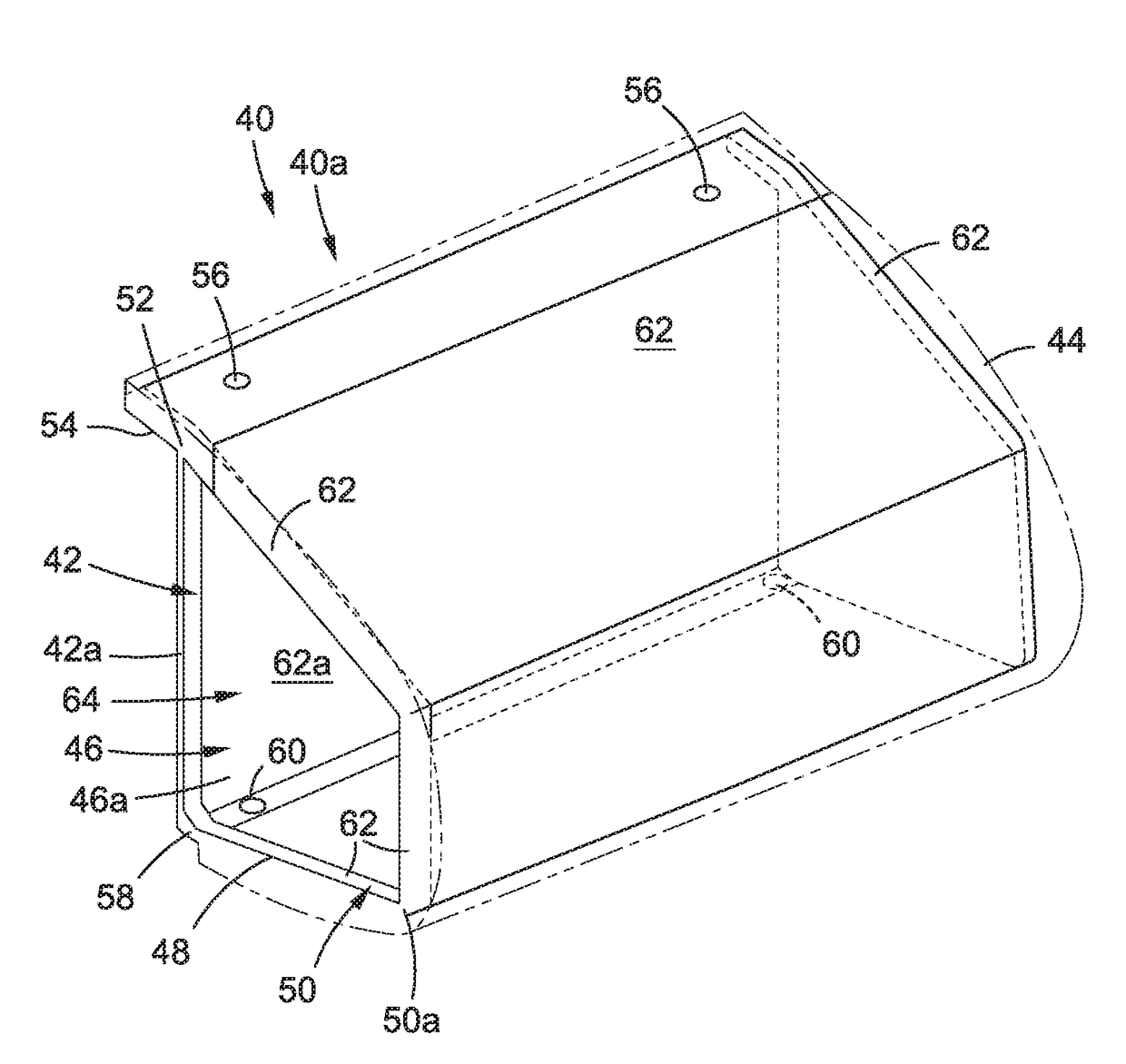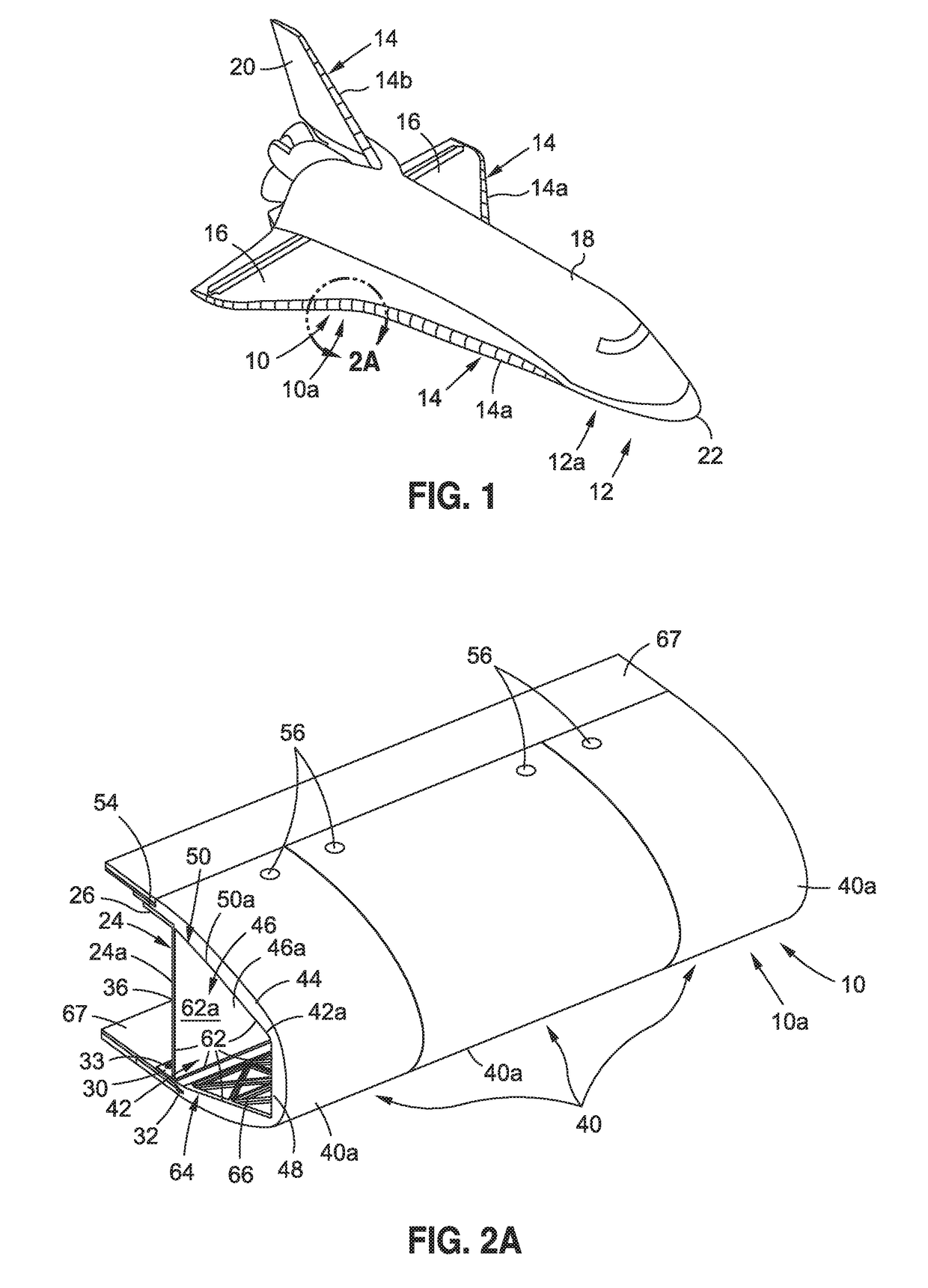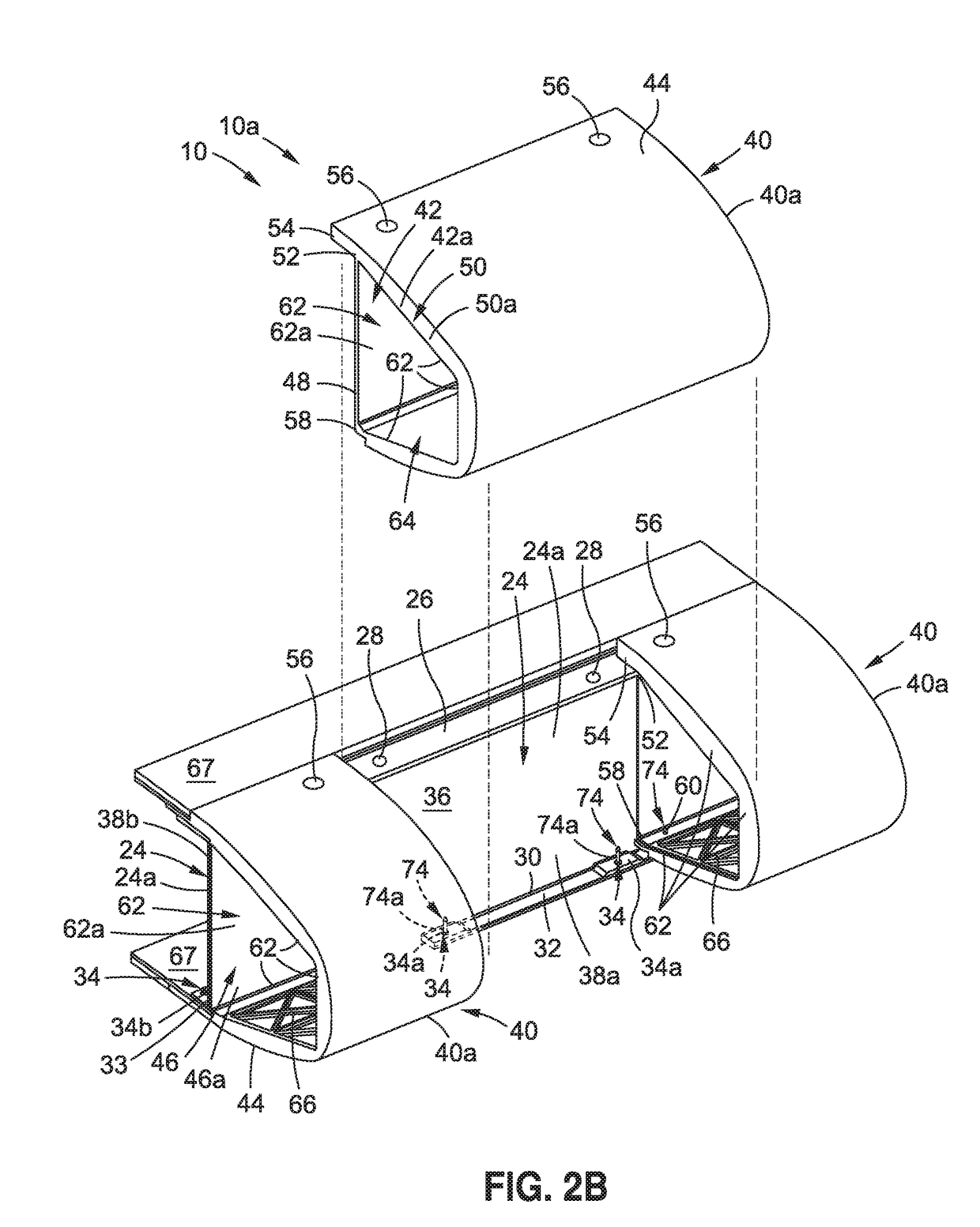Leading edge systems and methods for aerospace vehicles
a technology for aerospace vehicles and leading edges, applied in the field of can solve problems such as damage to thermally insulating tiles, adversely affecting the leading edges of aerospace vehicles, aerospace vehicles such as aircraft, and aircraft may experience damage to the leading edges of wings or other surfaces
- Summary
- Abstract
- Description
- Claims
- Application Information
AI Technical Summary
Benefits of technology
Problems solved by technology
Method used
Image
Examples
Embodiment Construction
[0043]Disclosed embodiments will now be described more fully hereinafter with reference to the accompanying drawings, in which some, but not all of the disclosed embodiments are shown. Indeed, several different embodiments may be provided and should not be construed as limited to the embodiments set forth herein. Rather, these embodiments are provided so that this disclosure will be thorough and fully convey the scope of the disclosure to those skilled in the art.
[0044]Now referring to the Figures, FIG. 1 is an illustration of a front perspective view of an exemplary aerospace vehicle 12, such as in the form of an aircraft 12a, having an exemplary embodiment of a leading edge system 10, such as in the form of leading edge system 10a, of the disclosure. In one embodiment, the aerospace vehicle 12 (see FIG. 1) is configured to travel at an altitude of 350,000 feet or less, and preferably, at an altitude of 150,000 feet or less, and comprises the aircraft 12a (see FIG. 1), an unmanned ...
PUM
 Login to View More
Login to View More Abstract
Description
Claims
Application Information
 Login to View More
Login to View More - R&D
- Intellectual Property
- Life Sciences
- Materials
- Tech Scout
- Unparalleled Data Quality
- Higher Quality Content
- 60% Fewer Hallucinations
Browse by: Latest US Patents, China's latest patents, Technical Efficacy Thesaurus, Application Domain, Technology Topic, Popular Technical Reports.
© 2025 PatSnap. All rights reserved.Legal|Privacy policy|Modern Slavery Act Transparency Statement|Sitemap|About US| Contact US: help@patsnap.com



